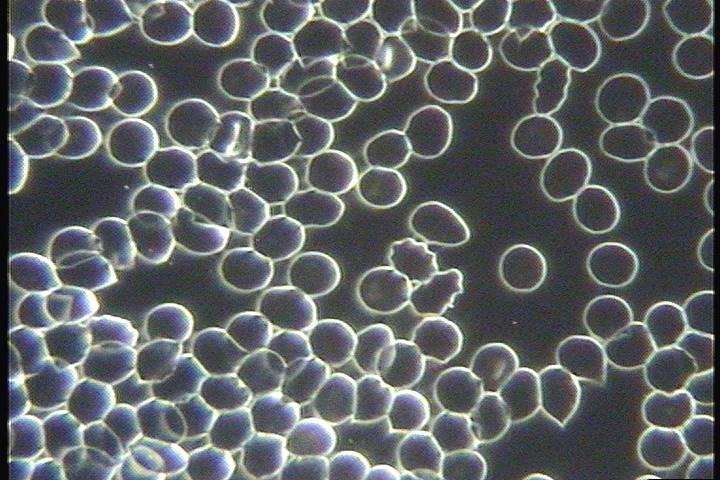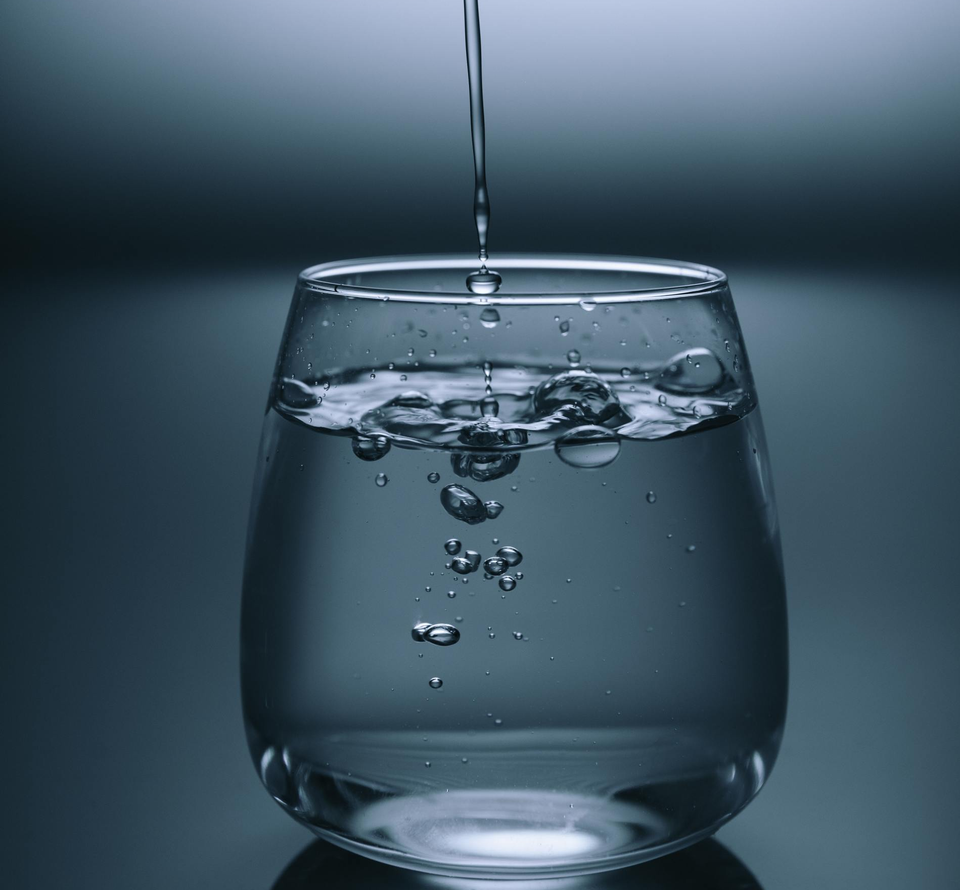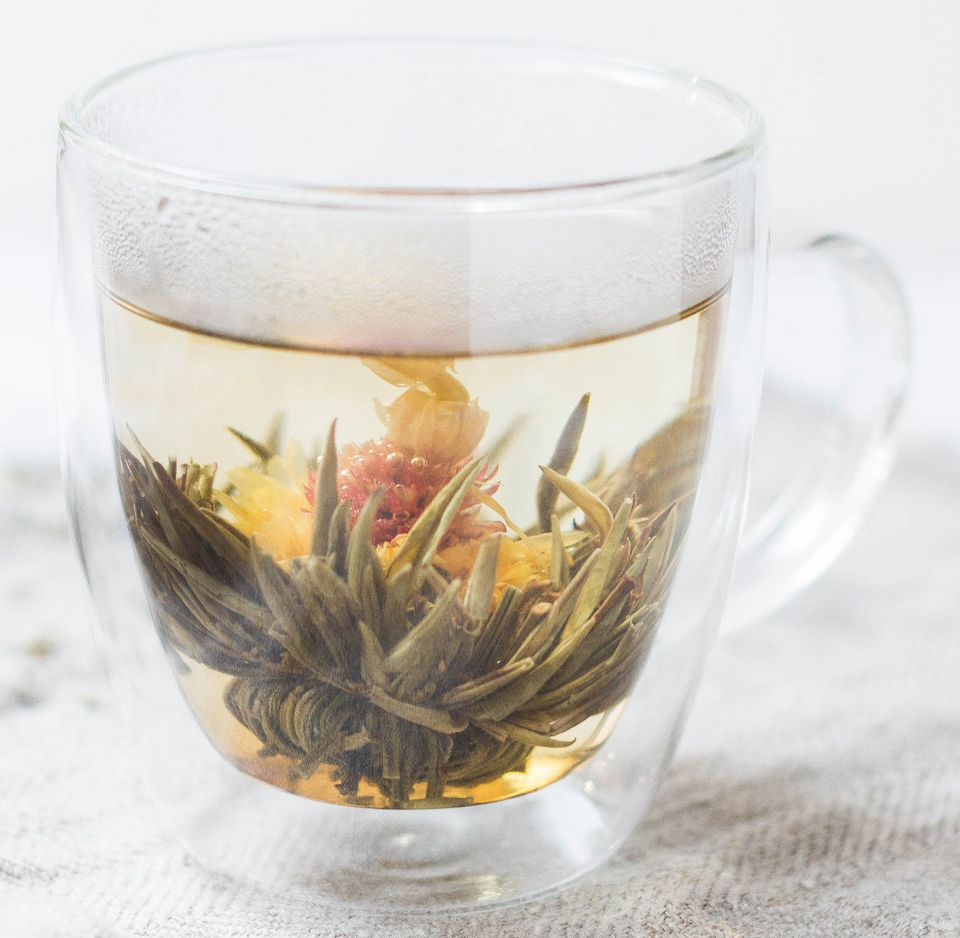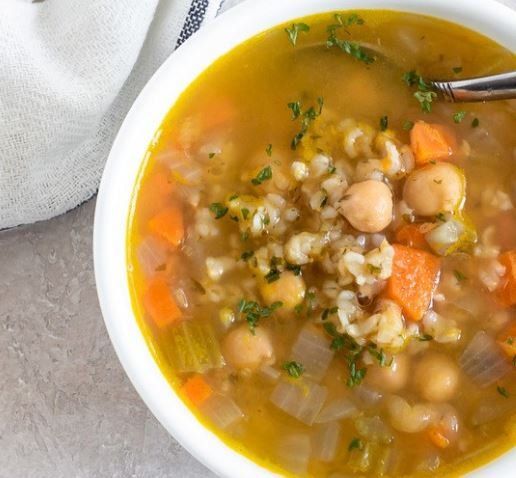Water - How Much Do I Really Need to Drink?
Water is essential for life.

Water is essential for life. You can only survive a few days without it. And being hydrated is essential for health. I could argue that water is the most essential nutrient of them all. Water is needed for every cell and function in your body.
Water is a huge part of your blood; it cushions your joints and aids digestion. It helps stabilize your blood pressure and heart beat. It helps to regulate your body temperature and helps maintain electrolyte (mineral) balance. And that's just a few of its roles.
Dehydration can impair mood and concentration, and contribute to headaches and dizziness. It can reduce your physical endurance, and increase the risk for kidney stones and constipation. Extreme dehydration can cause heat stroke.
So, water is critical for life and health.
But, just as way too little water is life-threatening, so is way too much. As with most things in health and wellness, there is a healthy balance be reached.
But, there are conflicting opinions as to how much water to drink. Is there a magic number for everyone? What counts toward water intake?
Let’s dive right in.
Water is a huge part of your blood (blood plasma is 92% water + 8% blood); it cushions your joints and aids digestion.
If you have had your blood checked by me using Darkfield Microscopy
you would have been able to observe whether dehydration is affecting you at the cellular level. When we are dehydrated our red blood cells clump or aggregate together impairing circulation, amongst other things.
Above you can see how the cells are 'sticking' together. They should actually be single and free flowing throughout our body, rather than stacking on top of one another.
How Much Water Do I Need?
Once upon a time, there was a magic number called "8x8." This was the recommendation to drink eight-8 oz glasses of water every day; that's about 2 liters of water.
Over time, we've realized that imposing this external "one size fits all" rule may not be the best approach. Now, many health professionals recommend drinking according to thirst. You don’t need to go overboard forcing down glasses of water when you’re not thirsty. Just pay attention to your thirst mechanism. We have complex hormonal and neurological processes that are constantly monitoring how hydrated we are. And for healthy adults, this system is very reliable.
Besides thirst, pay attention to how dark and concentrated your urine is. The darker your urine, the more effort your body is making to hold on to the water it has. Urine is still getting rid of the waste, but in a smaller volume of water, so it looks darker.
There are a few other things to consider when evaluating your hydration status. If you’re sweating a lot, or are in a hot/humid climate drink more. Breastfeeding moms, elderly people, and people at risk of kidney stones need to drink more water too. So do people who experience vomiting and/or diarrhea, as both can quickly dehydrate our bodies.
So, ditch the “one size fits all” external rule, and pay more attention to your body’s subtle cues for water.
What Counts Towards My Water Intake?
All fluids and foods containing water contribute to your daily needs.
Water is usually the best choice. If you're not drinking pure water, consider the effects that the other ingredients have on your body. Drinks containing sugar, alcohol, and caffeine will have effects besides hydration. Sugar can mess with your blood sugar balance. Alcohol can make you feel "buzzed." And caffeine can keep you awake. Let's talk a bit more about caffeine for a second.
Caffeine is the infamous "dehydrator," right? Well, not so much. If you take high dose caffeine pills, then sure, they cause fluid loss. But the idea that coffee and tea don't count toward your water intake is an old myth. While caffeine may make you have to go to the bathroom more, that effect isn't strong enough to negate the hydrating effects of its water. Plus, if you're tolerant to it (i.e., regularly drink it) then the effect is even smaller. So, you don’t need to counteract your daily cup(s) of coffee and/or tea.
Also, many foods contain significant amounts of water. Especially fruits and vegetables like cabbage, cantaloupe, watermelon, strawberries, celery, spinach, lettuce, apples, pears, oranges, grapes, carrots, and pineapple. These foods are over 80% water, so they are good sources of hydration.
So, you don’t need to count your plain water intake as your only source of hydration. All fluids and foods with water count.
Bottom Line
All fluids and foods containing water contribute to your daily needs.
Water is usually the best choice. If you're not drinking pure water, consider the effects that the other ingredients have on your body. Drinks containing sugar, alcohol, and caffeine will have effects besides hydration. Sugar can mess with your blood sugar balance. Alcohol can make you feel "buzzed." And caffeine can keep you awake. Let's talk a bit more about caffeine for a second.
Caffeine is the infamous "dehydrator," right? Well, not so much. If you take high dose caffeine pills, then sure, they cause fluid loss. But the idea that coffee and tea don't count toward your water intake is an old myth. While caffeine may make you have to go to the bathroom more, that effect isn't strong enough to negate the hydrating effects of its water. Plus, if you're tolerant to it (i.e., regularly drink it) then the effect is even smaller. So, you don’t need to counteract your daily cup(s) of coffee and/or tea.
Also, many foods contain significant amounts of water. Especially fruits and vegetables like cabbage, cantaloupe, watermelon, strawberries, celery, spinach, lettuce, apples, pears, oranges, grapes, carrots, and pineapple. These foods are over 80% water, so they are good sources of hydration.
So, you don’t need to count your plain water intake as your only source of hydration. All fluids and foods with water count.
You may not love the taste (or lack thereof) of plain water. One thing you can do is add some sliced or frozen fruit to your water. Since we learned that you could hydrate just as well with other water-containing beverages, here are some of my favorite herbal teas you can drink hot or cold.
- Hibiscus
- Lemon
- Peppermint
- Rooibos
- Chamomile
- Lavender
- Ginger
- Lemon Balm
- Rose Hips
- Lemon Verbena
Instructions
1. Hot tea - Place tea bags in a pot (1 per cup) and add boiling water. Steep for 5 minutes and add a touch of honey and slice of lemon, if desired. Serve.
Iced tea -
Place tea bags in a pot (2 per cup) and add boiling water. Steep for 5 minutes and add a touch of honey, if desired. Chill. Add ice to a glass and fill with cold tea.
Tip: Freeze berries in your ice cubes to make your iced tea more beautiful and nutritious.
Serve & enjoy!
References:
https://authoritynutrition.com/how-much-water-should-you-drink-per-day/
http://www.health.harvard.edu/blog/water-water-everywhere-2016110310577
http://www.health.harvard.edu/staying-healthy/how-much-water-should-you-drink
http://neurotrition.ca/blog/why-you-should-raise-your-glass-water
Recent Posts
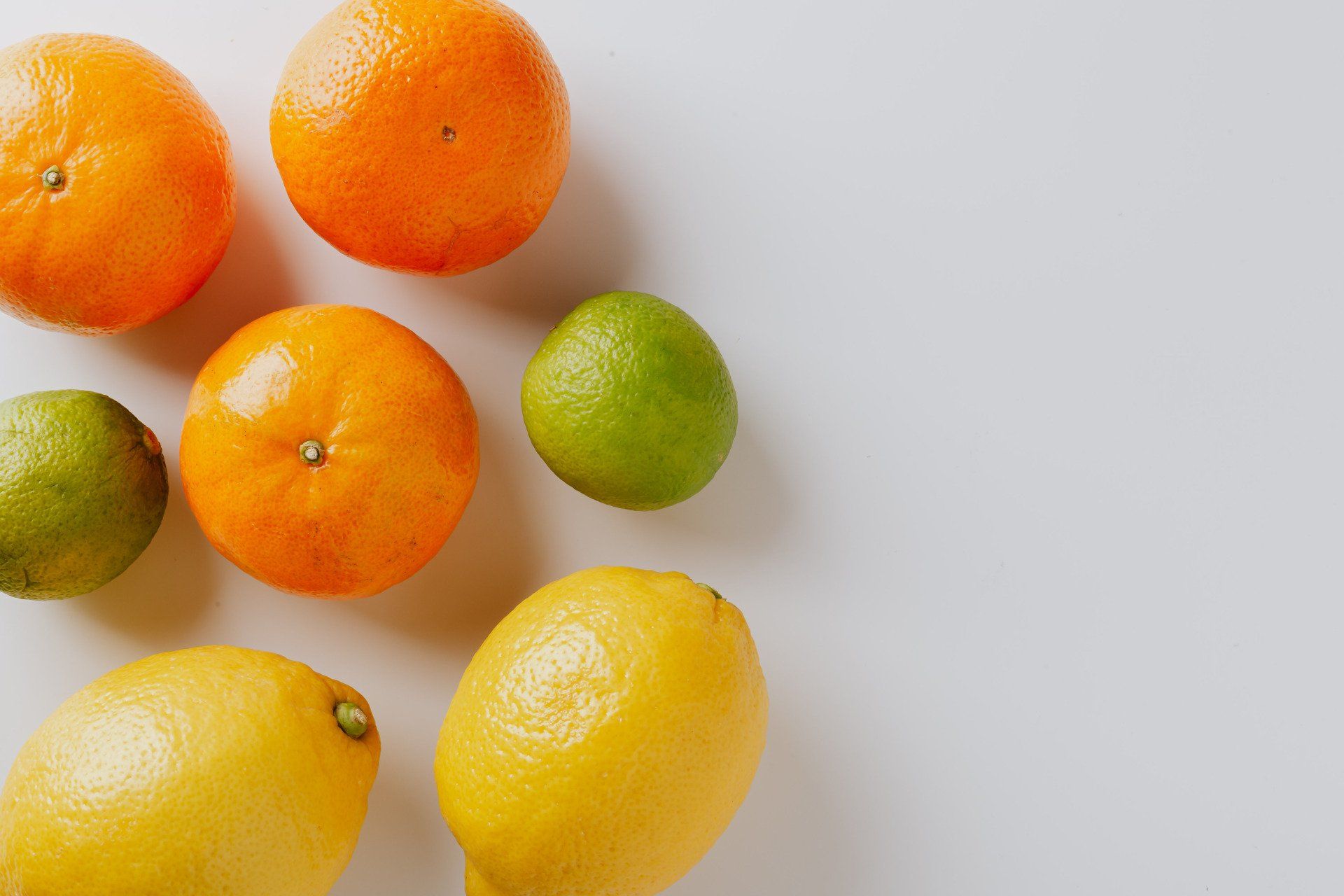
Vitamin C is an essential nutrient that promotes healing in every situation of poor health. Benefits Include: activates growth and repair in tissues boosts immune system aids in synthesis of collagen for healthy skin and mucous membranes vital to the bodys healing process Unlike some animals, humans are unable to synthisize vitamin C endogenously, so it's an essential dietary component. Best Sources Include: strawberries blackberries citrus fruits tomatoes peppers apples persimmons guavas mangos acerola cheries potatoes turnip greens kale spinach broccoli avocado bananas collards black currants parsley papaya In a 2005 study about the immune-enhancing role of vitamin C and zinc and effect on clinical conditions revealed that sufficient amounts of vitamin C (1g) and zinc (50mg) reduced the incidence and improved the outcome of pneumonia, malaria, and diarrhea infections, especially in children in developing countries. PMID: 16373990 Are you getting enough?

Salmon is by far my top pick when it comes to health benefits of eating wild-caught fish. An excellent source of easy to digest protein, vitamin B12, vitamin D and packed with anti inflammatory EPA and DHA omega 3 fatty acids which are essential nutrients that our body's cannot produce on their own. I also love the simplicity of this one pan dish. Busy weeknights don't have to mean grabbing a pizza on the way home from work. Simply prep your sheet pan with veggies and fish and bake in a pre-heated oven for 15 minutes! Make it a heartier meal and serve with leftover cooked basmati rice or cooked quinoa. Super easy, cost effective and nutritious. One Pan Mediterranean Salmon Ingredients: 2 cups Basil Leaves 1/2 Lemon (juiced) 1 Garlic (clove) 1/4 tsp Sea Salt 1/4 cup Hemp Seeds 1/4 cup Extra Virgin Olive Oil 4 Wild Salmon Fillets (about 5 oz. each) 1 1/2 cups Artichoke Hearts 1/2 cup Pitted Kalamata Olives 4 Tomato (large, quartered) Directions: Preheat oven to 450ºF (232ºC) and line a baking sheet with parchment. Make pesto by combining basil, lemon juice, garlic, sea salt, hemp seeds and olive oil together in a small food processor. Pulse until smooth. Lay wild salmon fillets on baking sheet and arrange the artichokes, olives and tomatoes on the baking dish around the fillets. Top each piece of salmon with a generous spoonful of pesto. Bake for 15 minutes or until fish is cooked through. Divide onto plates and enjoy! No salmon - simply swap out for rainbow trout. Try this recipe this week - it's easy and nutritious!
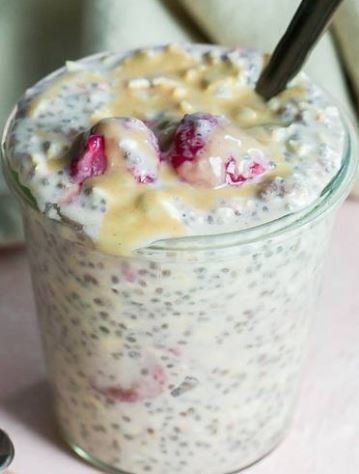
Strawberry Tahini Overnight Oats Ingredients: 1/2 cup Oats (wheat free) 3/4 cup Oat Milk (or your favorite plant based milk) 2 tbsps Chia Seeds 2 tbsps Tahini 1/8 tsp Cinnamon 1/2 cup Strawberries (halved) Directions: Add the oats, milk, chia seeds, tahini, cinnamon, and strawberries to a mixing bowl. Mix well. Cover and place in the fridge overnight, or for at least 8 hours. Remove the oats from the fridge and enjoy!
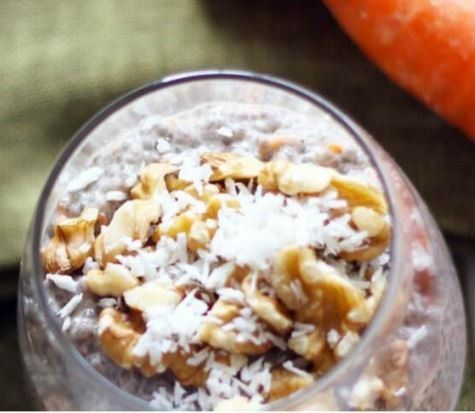
Fiber is essential because it promotes gut health and also reduces the risk of developing many chronic dis-eases including constipation, hemorrhoids, diverticulitis, colon cancer, breast cancer, high cholesterol, and diabetes. Fiber is often counted is often counted in the “Total Carbohydrates” on a food label. Since fiber is not used as energy but is excreted it does not count as caloric intake. Because it is not digested it counts as “0” calories. When increasing fiber in your diet be sure to start with a hydrated body, otherwise you may experience the opposite effect such as bloating and constipation. Tips: Ensure you are drinking at least 8 cups of water a day (includes herbal teas) Begin slowly such as 1/2 tsp of chia seeds added to a smoothie, then increase by 1/2 tsp each d ay—as long as your bowels are still moving and you're not bloated. Touted as a functional food, chia seeds are highly anti-inflammatory and improves cholesterol, blood pressure, and stabilizes blood sugar. Its my absolute favourite for a healthy gut and healthy body.

I hope you are enjoying the last week of summer break (or should I say March break) and are enjoying time outdoors. Along with much anticipation to return to some sort of routine again with work and/or school, I know a lot of you are feeling anxious and worried. I have been listening to your concerns and questions on how to best protect yourself and your family and I want to help. I believe the best defense possible for you and your family is a STRONG and healthy immune system. These recommendations for boosting your child's immunity can be a challenge to implement but worth the effort. Do your best with them and try not to get discouraged as even making small changes in these areas can make a HUGE difference in your child's well-being. Here are my five natural ways to boost your child's immunity: ---->> Lower inflammation by eating a rainbow of colors -- red-yellow-green-orange-purple (preferably organic). These bright colored fruits and vegetables are packed with antioxidants that combat free radicals which can damage parts of our cells such as proteins, DNA, and cell membranes by stealing their electrons through a process called oxidation. Serve less processed, packaged, prepared lunchables, frozen dinners and limit eating out at the "golden arches." ----->> Support your gut microbiome by feeding it prebiotic rich fiber. The friendly bacteria in your gut are responsible for over 70% of your immunity. Garlic, onions, asparagus, leeks, dandelion greens, and oats are just a few of these fiber rich foods that help gut bacteria produce butyrate, acetate and propionate for a healthier gut and immune system. ------>> Supplement. Research has identified specific natural products can augment and modulate the immune response to neutralize potential threats and pathogens. Probiotics maintain or re-establish normal bacterial flora in the digestive track supporting immune function. Visit https://ca.fullscript.com/welcome/neste and search "HMF Fit for School" my top pick and the one we use for our family. Consider adding in a probiotic along with vitamin C, D, zinc, DHA and magnesium along with a well balanced diet. Hummus & Veggie Snack Box (serves 1) Perfect for back to school lunches Ingredients: 1/2 Red Bell Pepper (sliced) 2 stalks Celery (cut into small stalks) 1/3 cup Blueberries 1/4 cup Hummus Directions: Assemble all ingredients into a storage container and refrigerate until ready to eat. Enjoy!


